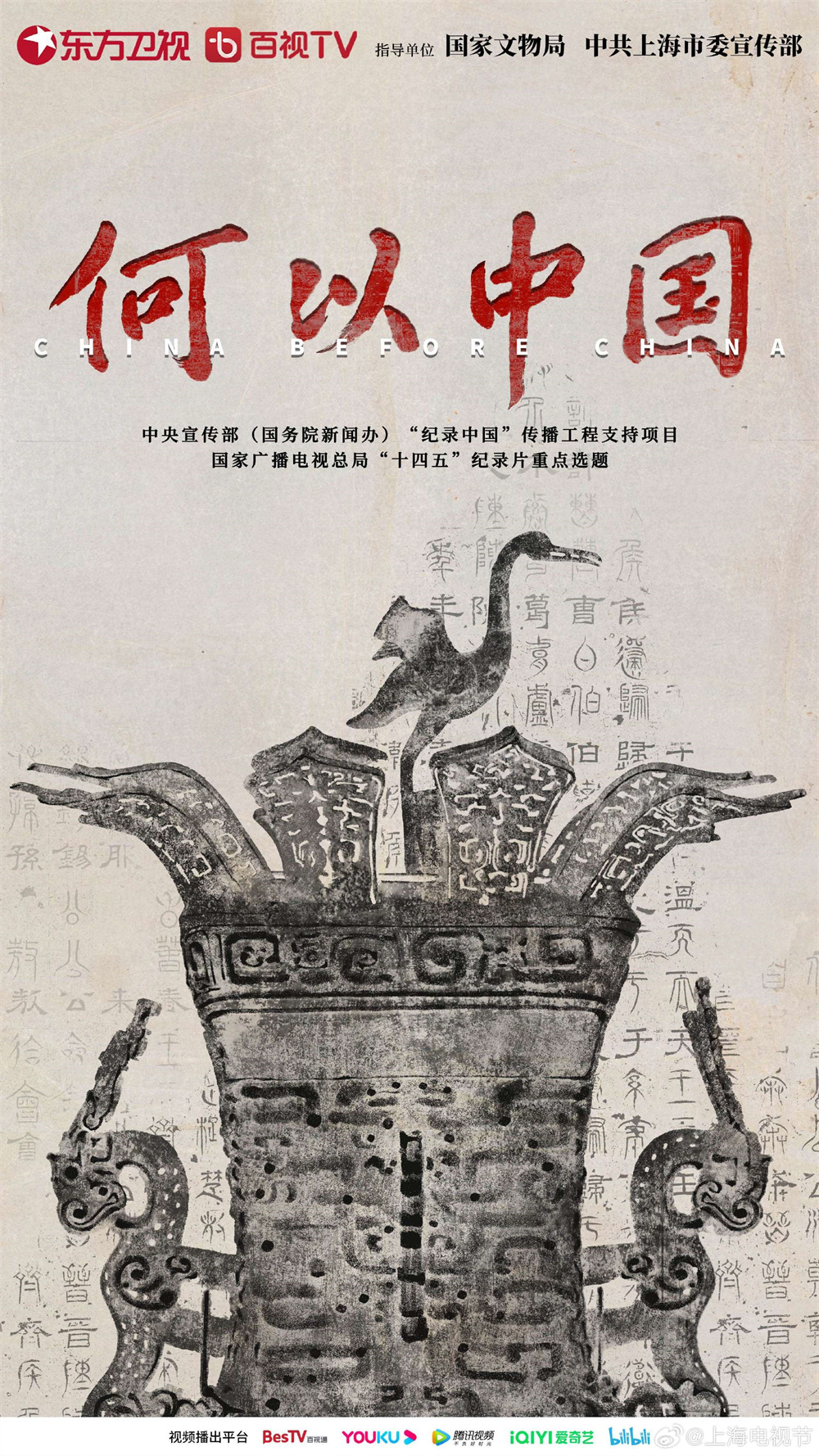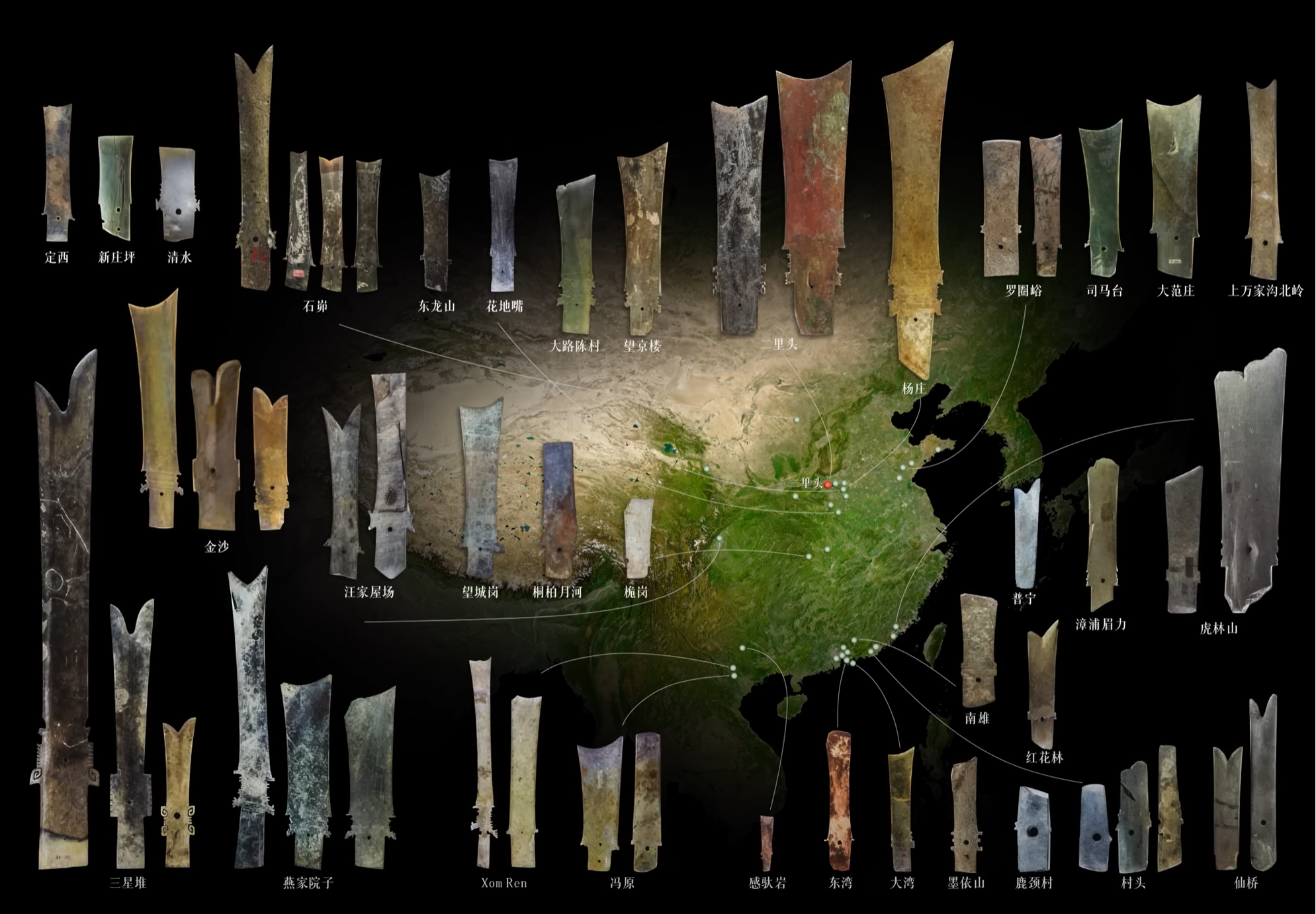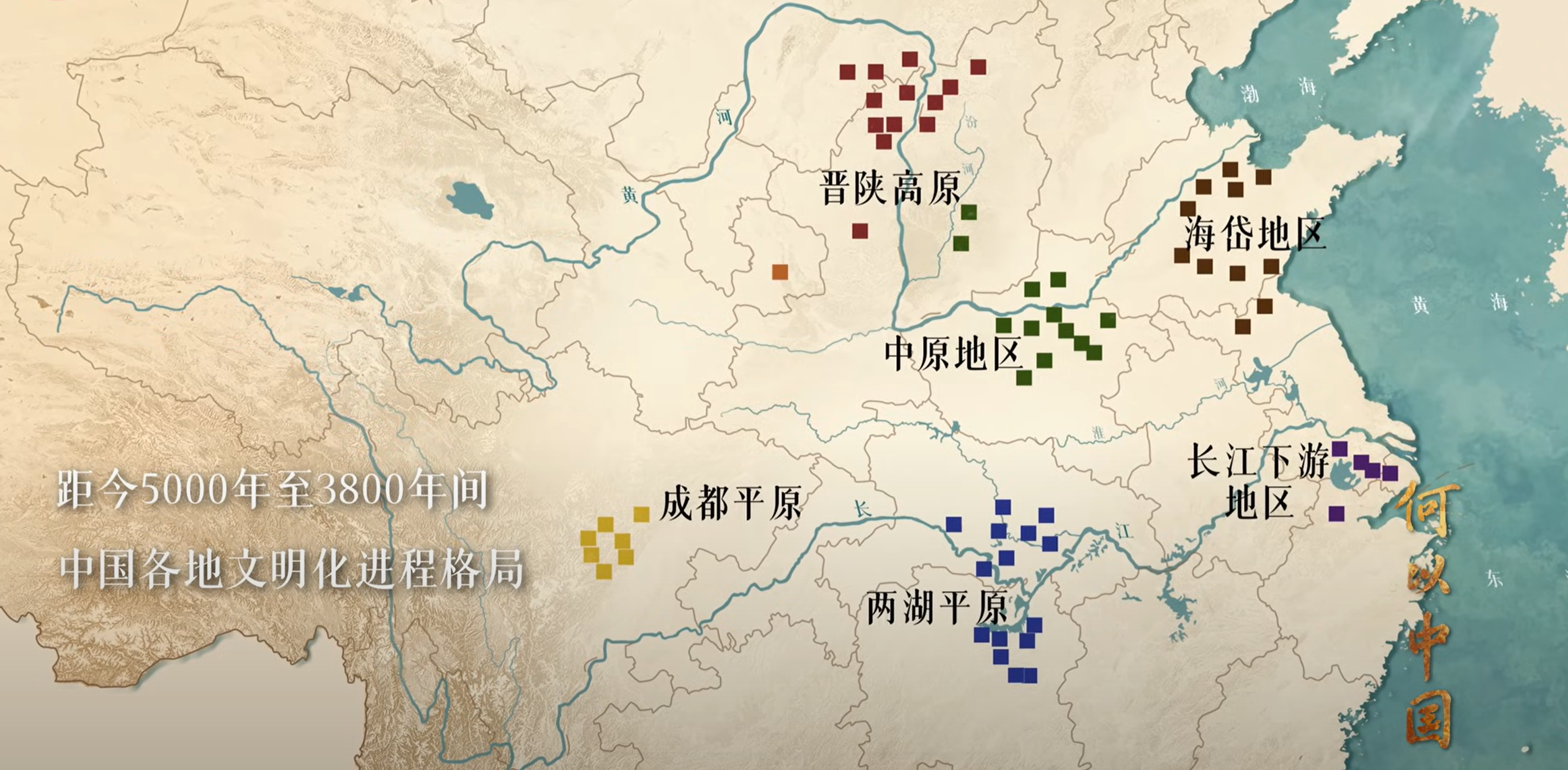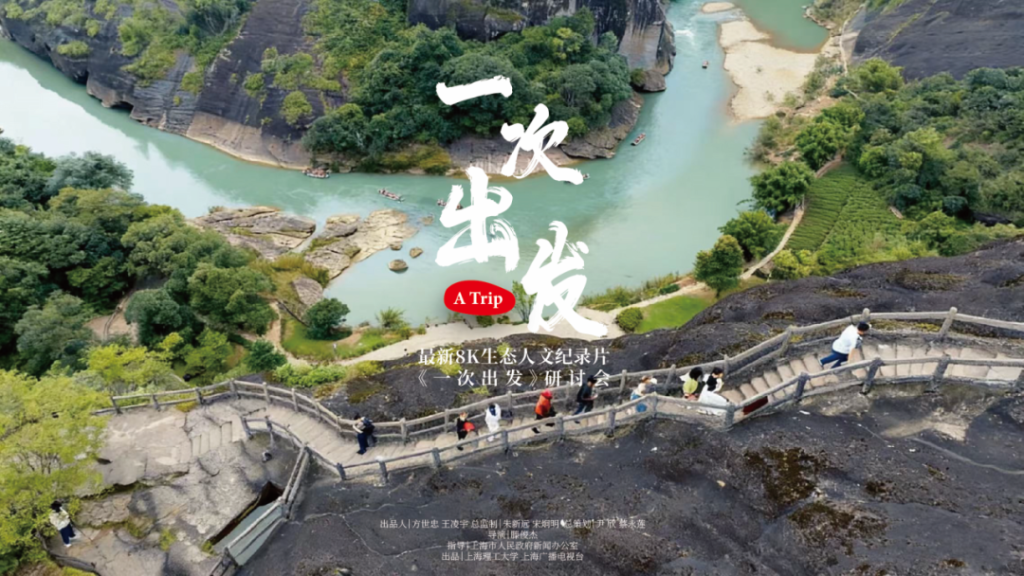
On June 2, 2023, General Secretary Xi Jinping pointed out in his important speech at the Symposium on Cultural Heritage and Development that "Chinese culture has a long history and Chinese civilization is extensive and profound. Only by fully and deeply understanding the history of Chinese civilization can we more effectively promote the creative transformation and innovative development of China's excellent traditional culture, more effectively promote the construction of socialist culture with Chinese characteristics, and build the modern civilization of the Chinese nation." During his inspection at the Chinese Academy of History that day, he emphasized: "We must implement major projects such as the 'Comprehensive Study on the Origin and Early Development of Chinese Civilization' and 'Archaeology of China', and do a good job in studying and interpreting the origin of Chinese civilization."
Chinese civilization is like a long river, flowing continuously, showing outstanding continuity, innovation, unity, inclusiveness, and peace. Where is the source of Chinese civilization? How did it develop? This is not only a meta-proposition of Chinese history and archaeology, but also a proposition of the times that a new form of civilization that is being conceived must respond to.
The documentary "Why China" was born at the right time. It is based on the major research results of the "Chinese Civilization Origins Project" and "Archaeology China". It uses the method of writing history through archaeology and documentary audio-visual expression to look back on the nation's past and analyze the roots and origins of Chinese civilization. It can be said to be a documentary on the origins of Chinese civilization.

Poster of Why China
Genre Imagination of Documentary Films on the Origin of Civilization
Chinese people have always respected and valued their own history and culture, and historical and cultural documentaries have always been the mainstream type of Chinese documentary creation. Historical and cultural documentaries can be subdivided into a variety of specific subject types: archaeological creations such as "Archaeology of China" and "Excavation Records", cultural and museum creations such as "If National Treasures Could Talk", etc.; according to the historical style, they can be divided into general history creations that run through the 5,000-year Chinese civilization such as "General History of China", period history creations of a dynasty such as "Southern Song", and biographical creations centered on biography of characters such as "Su Dongpo".
In the matrix of pan-historical and cultural documentaries, there is a type of subject that is rising, that is, civilization origin documentaries. It is a type of documentary that respects historical facts, uses archaeological documents, cultural relics and other evidence, and mobilizes multiple artistic and technical means to record, present and analyze the foundation, origin, formation and early development of Chinese civilization.

Screenshot of Why China
This type of documentary presents the following characteristics and trends in creation: First, it is history-based. It fully respects historical facts and archaeological evidence, absorbs the latest archaeological and historical research results, or cooperates deeply with authoritative experts and scholars, reflecting the academic rigor and interdisciplinary practice characteristics of the creation of such documentaries. This provides basic resources and guarantees for documentaries on the origin of civilization. Second, audio-visual upgrading. In the embryonic stage of civilization, the documents, cultural relics and archaeological results are extremely limited, and some of them are still in the form of myths and legends. In terms of creation, it is more fully exerted artistic imagination and expression, mobilizes a variety of technologies, artistic elements and means, or uses digital and artificial intelligence technology, or uses scene reconstruction, actor role-playing, CG animation and other forms to make the abstract macro-civilization narrative more specific, vivid and fresh. Third, the value of spreading Chinese civilization is to explain and spread "Why China", "Why China" and "Why Civilization" in an audio-visual form, show the outstanding characteristics and rich connotations of Chinese civilization, witness the profoundness and long history of Chinese civilization, forge a strong sense of community of the Chinese nation, illuminate the future with history, and provide a continuous spiritual power for national rejuvenation.
The Narrative Logic Construction of "Why China"
"Why China" explores the narrative theme of "the unity of Chinese civilization and its sustainable development", and analyzes the context of China's civilization from diversity to unity and then to unity. Among them, "why" represents a logical narrative about the origin of civilization. In front of such a grand narrative proposition, on the vast and long historical timeline, where does the narrative of "Why China" start and how is it structured?
"Why China" is divided into eight episodes. It has a timeline, extending my country's one million years of human history, ten thousand years of cultural history, and more than five thousand years of civilization history; it also presents space, from settlements to cities, from regional sparks to the shining map of Chinese civilization. Time is the bone and space is the flesh, which constructs the narrative system of "Why China". The film begins with a flashback technique, starting from the "Qin and Han", which is the period when China's great unification was established. From the overall structure, "Qin and Han" is more like a prologue to the whole article, that is, it first throws out the fruit of civilization such as "the unified dynasty landscape", pointing out the key point of "Why China". Then the narrative begins from the second episode, tracing back to the prehistoric era at the beginning of the origin of Chinese civilization. Overall, it is slowly unfolded in the seven episodes of "Cradle", "Stars", "Ancient Country", "Choose the Middle", "Shang", "Homeland" and "The World" according to the timeline, decoding "Why China".

Screenshot of Why China
In the narration of the growth history of how Chinese civilization grew from a cradle to a strong country, the four episodes of "Cradle", "Stars", "Ancient Country" and "Choosing the Center" combine archaeological discoveries and historical inferences to explain "the regional diversity of early Chinese development and the increasingly in-depth regional interaction and integration", aiming to show that the history of China is the history of exchanges, collisions and integration of different ethnic groups, regions and settlements; the second half of the three episodes of "Shang", "Home and Country" and "The World" trace back to the three ancient dynasties until returning to the unification of Qin and Han mentioned at the beginning, a multi-ethnic unified centralized state was born, and Chinese history entered a new era. "Why China" completes the narrative loop.
Archaeological evidence and artistic empowerment
As a documentary about the origin of civilization, "Why China" is based on archaeological discoveries and documentary records, and tries to get as close to and restore history as possible. However, in the narrative of "Why China", many ancient histories and even prehistoric histories lack text and archaeological results, so how to tell the story in the form of images has become a major problem. The film combines multiple techniques, blending reality and virtuality, and complementing history and imagination, to interpret the civilization code of "Why China" in an audio-visual way.
Archaeological evidence is the foothold for the film's historical narrative, scene construction, and character design. The program team established the creative principle of "trying to be based on facts and in line with archaeological facts as much as possible, and restoring the material appearance and cultural landscape of that era as much as possible", striving to bring the audience a more real and tangible history. According to the main creators, "Why China" filmed more than 230 archaeological sites, museums and other locations across the country. The creative team sorted out more than 3 million words of academic materials, and the script was written with more than 400,000 words. During the historical scene shooting stage, more than 220 narrative scenes, more than 2,000 sets of costumes, more than 1,500 accessories, and more than 3,600 props were restored. These constitute the "audio-visual evidence" that is the basis of the film.
The creative team specially set up the core job of "site art director" to restore the scene and shoot according to archaeological materials. "In the villages of Jiahu, different families are grouped in groups, scattered around the central square. There are kilns for making pottery and cellars for storing food next to the houses. The dead sleep underground not far from the houses." In order to match the 20-second copywriting lines, the site art director spent about three weeks to restore the Jiahu settlement. For a ceremony, the crew built a large house at the Xipo site in a 1:1 ratio. The Imperial Academy scene was restored with reference to the Han Dynasty lecture bricks, and the West Que Tower of the Jieshi Palace was restored with reference to the research of architectural historian Yang Hongxun. In addition to the restoration and reconstruction of large historical scenes, the presentation of many characters and historical details also refers to archaeological empirical results. The overall look of Hu Ge's character, Shuo Fuhong, was based on the image of the pottery figurines in the Chu Tomb at Beidongshan in Xuzhou (around the middle of the Western Han Dynasty, during the reign of Emperor Wu), including the "little red hat" worn by Shuo Fuhong, and the brushes and grinding stones used were all restored according to the unearthed cultural relics. These documentary image symbols based on restoration and reproduction in "Why China" are based on archaeological excavations and research results as much as possible, thus establishing an indirect index relationship with the real world of history, reflecting the documentary's commitment to authenticity to the public.
The review of history in Why China is full of humanistic feelings and romanticism, and many expressions are poetic. The film makes good use of images and creates historical contexts, providing a place to feel the historical atmosphere, or connects historical narratives with the perspective of the protagonist, and presents the mood and emotions of the characters, stimulating the audience's emotions and experience, rather than directly disclosing information or explaining views on historical details. At the same time, in terms of content presentation, the film also downplays the hardships of the Chinese ancestors in creating civilization from scratch to a certain extent, reflecting the creator's warmth and love for the "youth" of Chinese civilization.
Faced with a grand theme, the narrative voice of Why China seems to be light as a feather, unfolding the historical scroll at a leisurely pace. In terms of artistic expression, the film fully mobilizes the imagination and expressiveness of art, and the integration of dramatic aesthetics and technical aesthetics increases the aesthetics and vividness of history. In terms of narrative strategy, the film has a grand vision, and the viewpoint sometimes falls on the details, and even a considerable part of it interprets the history of the times with personal life history. The characters are either derived from history or constructed due to the need for plot connection. The organic combination of history and imagination has become an introduction to call for a broader historical imagination. The first episode, "Qin and Han", witnessed the events of Prime Minister Shi Lizun escorting demobilized soldiers back to their hometowns for 18 years, and Princess Jieyou returning to Han from Wusun in her later years through the perspective of Mi Fu Hong. An unknown Dunhuang clerk became a witness to history; the third episode, "Stars", constructed the images of the Xipo boy and the Lingjiatan boy, and brought out the characteristics of Dawenkou culture and Hongshan culture from their narrative perspective. The early Chinese civilization was like the handsome boys wandering in the historical context in the film. They were both concrete, as messengers of history, and hazy and ignorant, giving people endless imagination.
Cultural relics are the cohesion of civilization and also silent history. In the civilization narrative of "Why China", the creative team also used a large number of cultural relics to illustrate the profoundness and long history of Chinese civilization. The presentation of cultural relics has become a "meaningful form" carefully conceived by the team. On the one hand, cultural relics are rediscovered and constructed by ultra-high-definition lenses, especially digital technology, and become objects that are magnified and can be stared at in three dimensions. The cultural relics in the film are often not presented alone, but shot in combination, scattered in the picture, forming a kind of combined beauty. The richness and visual rhythm brought by the collection-style presentation of cultural relics are metaphors for the highlights created by Chinese civilization along the way, and also bring a double shock of beauty and civilization.
On the other hand, in the scenes and backgrounds of the presentation of cultural relics, they are either extremely simplified, with the texture and feel of the cultural relics themselves highlighted under the highlights, showing the superb craftsmanship and techniques while giving a glimpse into the heritage of civilization; or they are scene-based, or the cultural relics are placed in the "excavation site" to show the glory of the cultural relics when they are re-appeared, or the use scenes of the cultural relics are restored to blend with the historical scene. The film's presentation of pottery culture, bronze culture, jade culture, dragon culture, and ritual culture mostly follows this. In addition, the team also designed the visual dynamic lines of the presentation of cultural relics, making conventional static cultural relics dynamic and enriching the viewing perspective of cultural relics. For example, for the presentation of jade and stone artifacts unearthed from the Lingjiatan site, the creative team boldly restored them in the order of burial, and restored and placed them according to the upper, middle, lower, and bottom layers, as if leading the audience through the Neolithic Age more than 5,000 years ago.
The modern civilization of the Chinese nation is the product of the continuation and development of Chinese civilization over the past 5,000 years. Only by seeing the past more thoroughly can we look forward to the future more confidently. And documentaries are undoubtedly the best medium for the dissemination of civilization in the era of audio-visual civilization. The rise of documentaries on the origins of Chinese civilization, represented by "Why China", not only uses images to forge the subjectivity of national culture and civilization, but is also an important practice for Chinese documentaries to explore their own subjectivity and establish their own characteristics in the content map of world documentaries.
(The author is the deputy director and associate professor of the Audiovisual Communication Department of Communication University of China. This article was originally published in the 6th edition of China Art News on July 8, 2024)


